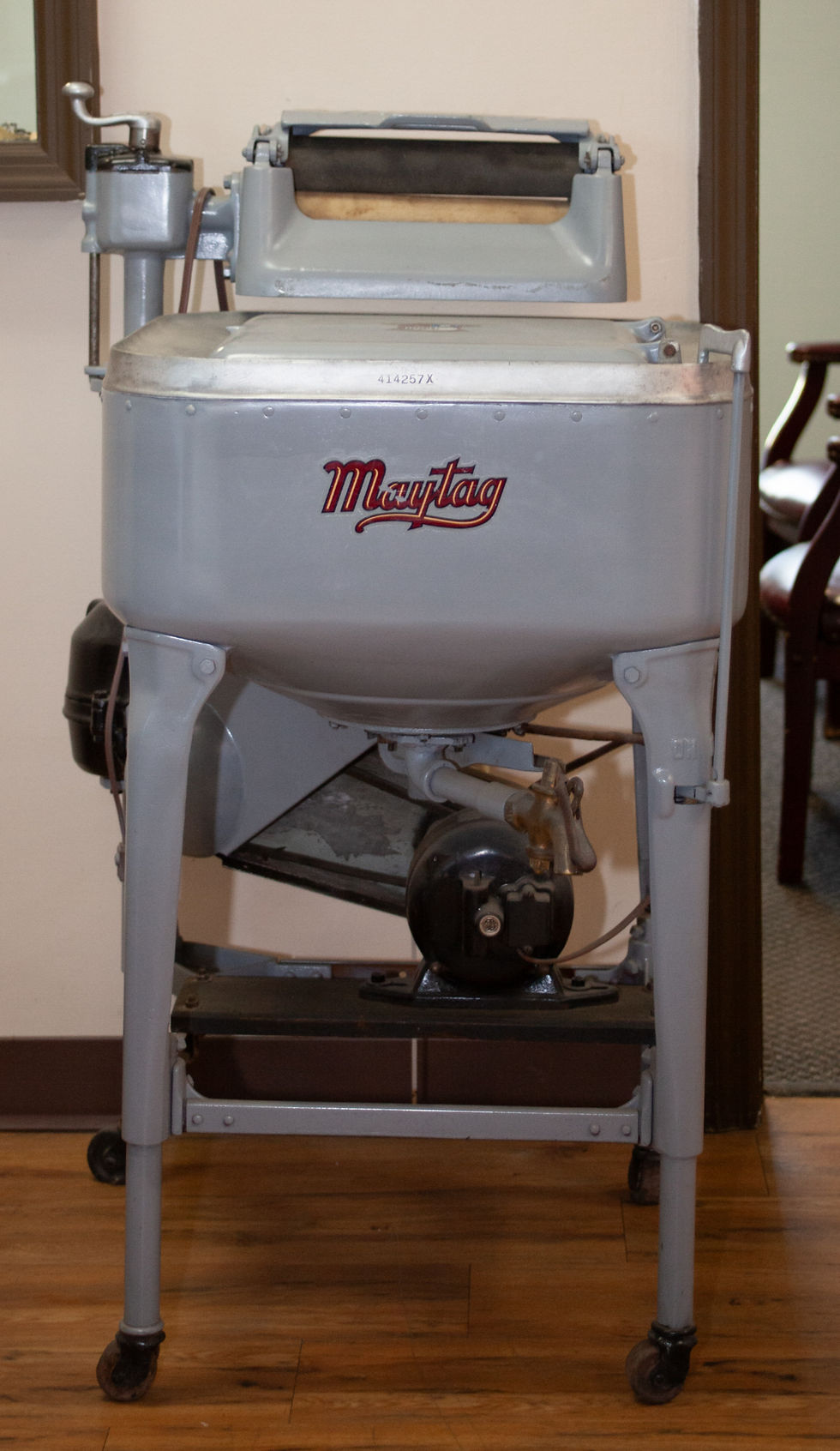Daily Life Transformed
- Jodi Brunner
- Oct 7
- 3 min read
Updated: Oct 19
By Tammy Villanueva & Mary Carpenter Photos by Jessica McCafferty

Modern appliances have revolutionized daily living, making our lives easier and more efficient than ever before. The evolution of home appliances from their invention to today’s energy efficient wonders is a fascinating story of innovation, design and technology.
Let’s take a look at the history of some of these devices.
The Refrigerator: Before modern refrigeration, people used iceboxes to keep food cold. Those were literal boxes where large blocks of ice were placed to cool the contents. The first electric refrigerator for domestic use was invented in 1913.

The Washing Machine: The earliest method of washing clothes was by hand. The first hand-wringer washer was invented in the mid-19th century, following by the electric wringer washer in the early 20th century.
The Oven: Cooking over an open fire was the primary method for centuries. The first recorded use of an enclosed oven dates back to ancient Rome. The invention of cast iron stove came in the mid-18th century followed later by the electric oven in the early 20th century.
The Dishwasher: The first mechanical dishwasher was patented in 1850, but it was not until the 1950s that dishwashers became a common household appliance.
The Microwave Oven: The microwave oven was an accidental invention in 1946 when a man noticed the microwaves from an active radar set he was working on melted the candy bar in his pocket. The first commercial microwave oven was released the following year.
Wilson’s Appliance Centers in Plattsburgh, Lake Placid and St. Albans Vermont specialize in kitchen and laundry appliances. Four generations of Wilsons have followed industry trends for more than 100 years and it was the company’s current owner and president, Nate Wilson, I contacted to learn more about today’s appliances.
“Customers are prioritizing appliances that save the most amount of energy and are most cost effective,” Wilson offered. “Front load washers are a top purchase at this time. There can be an 80% savings of water consumption with them. The previous generation of machines could use up to 60 gallons of water compared to today’s high-efficiency machines that can use as little as eight gallons. In addition, today’s washers do a better job of extracting water, ultimately shortening drying time and thus saving energy.”
Induction ranges, long popular in Europe, have gained in popularity over the last five years according to Wilson. “With the help of new government regulations, sales in the U.S. for induction ranges are experiencing an upward trend.” The induction range differs from a traditional stove as it offers a magnetic heating surface. With induction, you are
creating an energy field between the burner and the pan. The result is that whatever is
being cooked is heated with very little heat loss which means faster cooking
times. “Another difference between induction and conventional stoves is that you can boil water, take the pot off the stove and put your hand on the magnetic field and you will not be burned,” Wilson explained.
Refrigerator technology is also changing. Wilson offered, “A new refrigerator recognizes how often and for how long its doors are opened and modifies its run performance accordingly, which means a more efficient operation.”
Wilson Appliances’ staff strives to educate customers on the differences between appliance makes, models and styles by offering presentations in their stores. One of the newest appliances to be introduced — the convection dryer — is able to operate on a 110 volt and dry as effectively as the 240-volt machine. “These machines are becoming immensely popular as states gear up for more energy efficient options,” Wilson observed.
When asked about the relationship between the cost of the new machines vs. energy
efficiency savings, Wilson stated, “Like everything, when the latest items are introduced to the
market, their prices tend to be higher. Nowadays, front load washers are about 20% higher than top loaders; however, the front loader can do so much more. It can handle bigger items while using less water, making them more cost efficient. And now that induction ranges are gaining market share their prices have begun to come down.”
“Are there significant differences between appliance brands?” I asked. Wilson explained, “Each product has an energy efficiency tag that allows the consumer to accurately calculate their unique efficiency savings based on how they use their appliances. The most dramatic difference in efficiency is really between styles of appliances rather than brands. For example, a top-freezer is more efficient than a side-by-side primarily due to the air circulation method. Big isn’t always better. Capacity and energy efficiency often work in the opposite direction, but there is a right appliance for each person and for each home.”
Wilson’s Appliance
795 State Route 3
Plattsburgh, NY 12901
(518) 563-5320
6197 Sentinel Road
Lake Placid, NY 12946
(518) 523-4123
2 Champlain Commons
Saint Albans, VT 05478
(802) 524-4123




Comments